20 Of The Longest-Lived Perennials For Your Garden
When you plant perennials instead of annuals, you get to enjoy the splendor of your garden for many years to come! Carefully choose some of these long-lived perennials, and you will have a full garden of low-maintenance plants year after year.
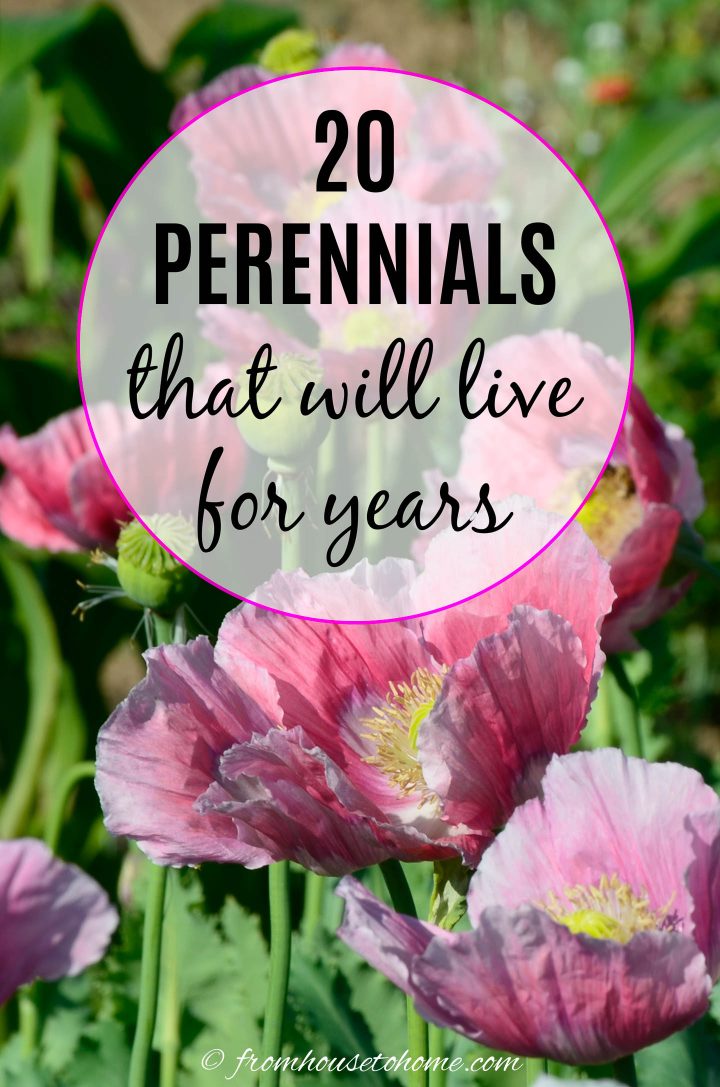
When we think of perennials, we often think of immortal flowers that will live in your garden forever.
In reality, many perennials are pretty short-lived, surviving for only 3 to 4 years.
Which kind of defeats the purpose of planting perennials, if you ask me.
That's why I'm always on the hunt for long-lived perennials…like the ones that can last for up to 50 years in your garden!
This list of long-lived perennials checks all the boxes. They are hardy, long-lasting, easy to care for, and (most importantly) an incredible addition to the garden.
Wondering which ones to choose? Check out this list of long-lived perennials that will fill your garden with beautiful blooms and foliage year after year.
1 | False Indigo
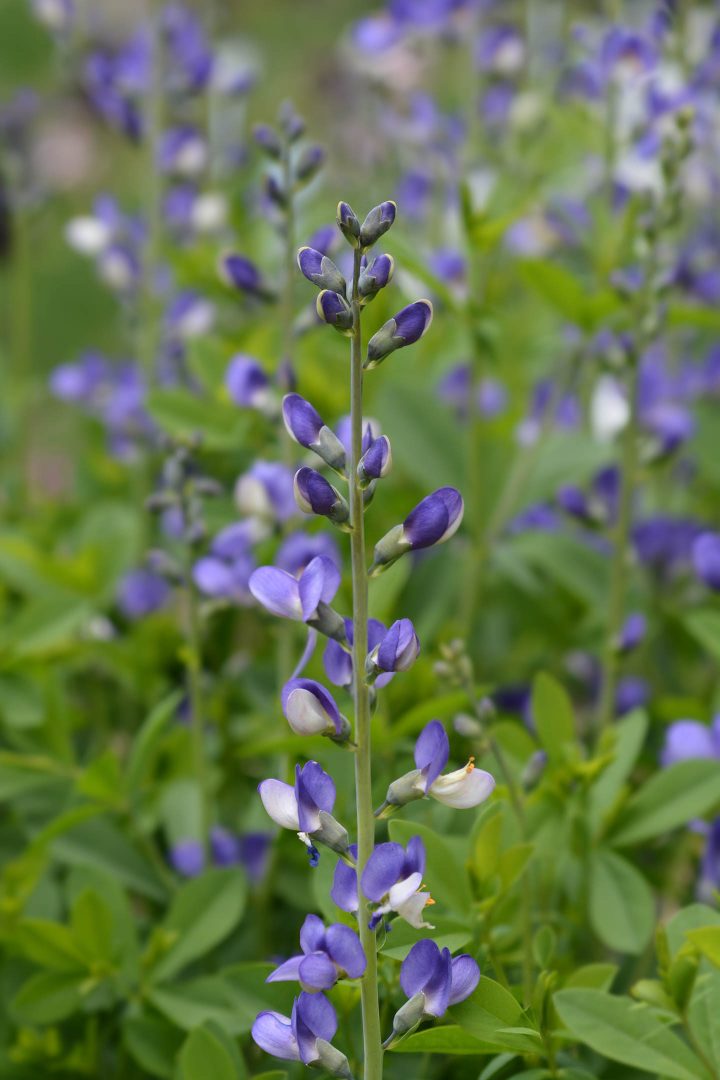
Botanical name: Baptisia australis
Zones: 3 to 10
Sun: Full sun
Bloom Time:
Height: 3′ to 4′ tall
Color: Blue
Baptisia, also known as false indigo, is a true-blue flower that gets its common name because it can be used as a a replacement for true indigo.
The pretty blooms look something like sweet pea flowers, turning into seed pods later in the year. And the leaves continue to look attractive all throughout the summer, even after the flowers are done.
If growing from seed, the plant will take 3-4 years before it flowers.
2 | Black-eyed Susan
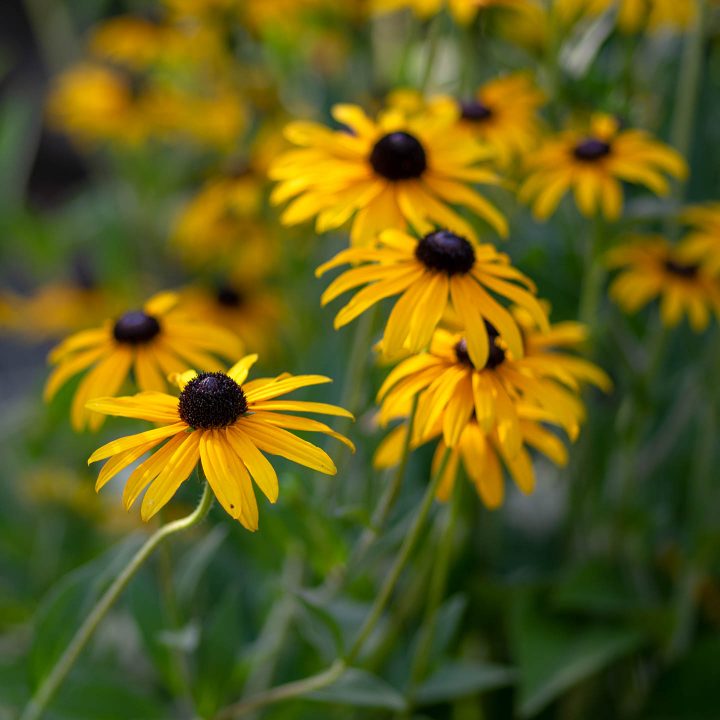
Botanical name: Rudbeckia hirta
Zones: 3 to 9
Sun: Full sun
Bloom Time: Summer, Fall
Height: 1′ to 3′ tall
Color: Orange, Red, Yellow
You’ve definitely seen this popular flower around! Native to North America, the black-eyed Susan is a popular wildflower and garden addition. The large golden-yellow flowers and dark centers create a distinct look.
With scratchy, slightly hairy leaves, the black-eyed Susan has few problems and is an easy-to-grow perennial.
It will bloom in its first summer but will take 2 to 3 years before it reaches full maturity.
The height of the flower can range from 1-foot dwarf varieties to the standard 3 feet tall stalks.
3 | Bearded Iris
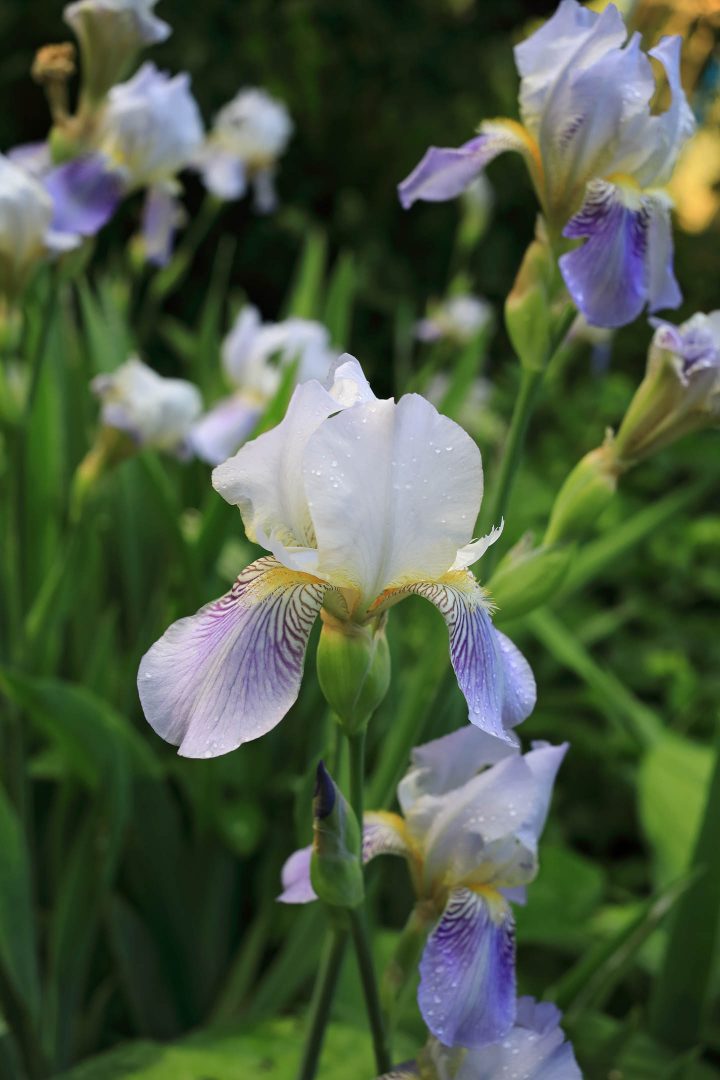
Botanical name: Iris germanica
Zones: 3 to 9
Sun: Full sun
Bloom Time: Spring, Fall
Height: 1′ to 3′ tall
Color: Red, orange, tallow, blue, purple, white, pink, and black
The bearded iris sure knows how to make a statement. With sword-like leaves, some of the petals drop while others stand upright.
One of the easiest iris flowers to grow, the bearded iris blooms every spring, with some varieties flowering again in the fall.
You can divide and replant iris flowers every 3 to 5 years to have never-ending perennial blooms.
4 | Feather reed grass
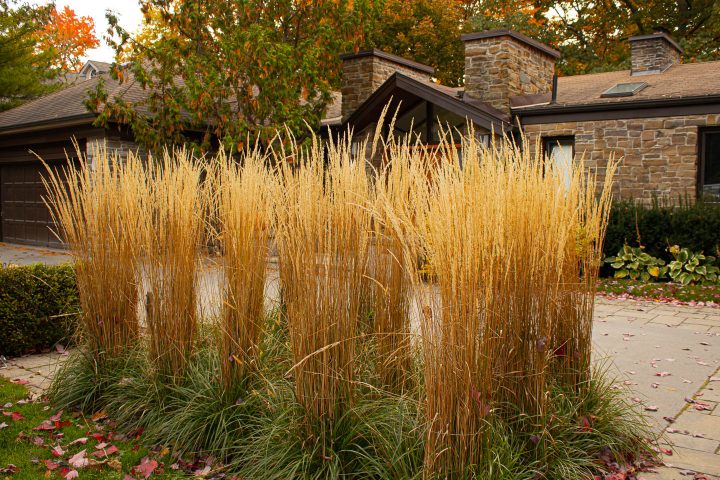
Botanical name: Calamagrostis x acutiflora
Zones: 4 to 9
Sun: Full sun
Bloom Time: N/A
Height: 4′ to 6′ tall
Color: Yellow
Don’t count out grass! Feather reed grass makes for the perfect ornamental plant, adding a different texture to the garden.
The best thing about this grass is it won’t flop down. Instead, the stems remain stiff and tidy throughout the year.
Feather reed grass grows in clumps with feather-like spikes rising above the leaves in the summer. Come fall, they turn into golden seed pods that will add interest to your garden even in the winter.
5 | Oriental poppy
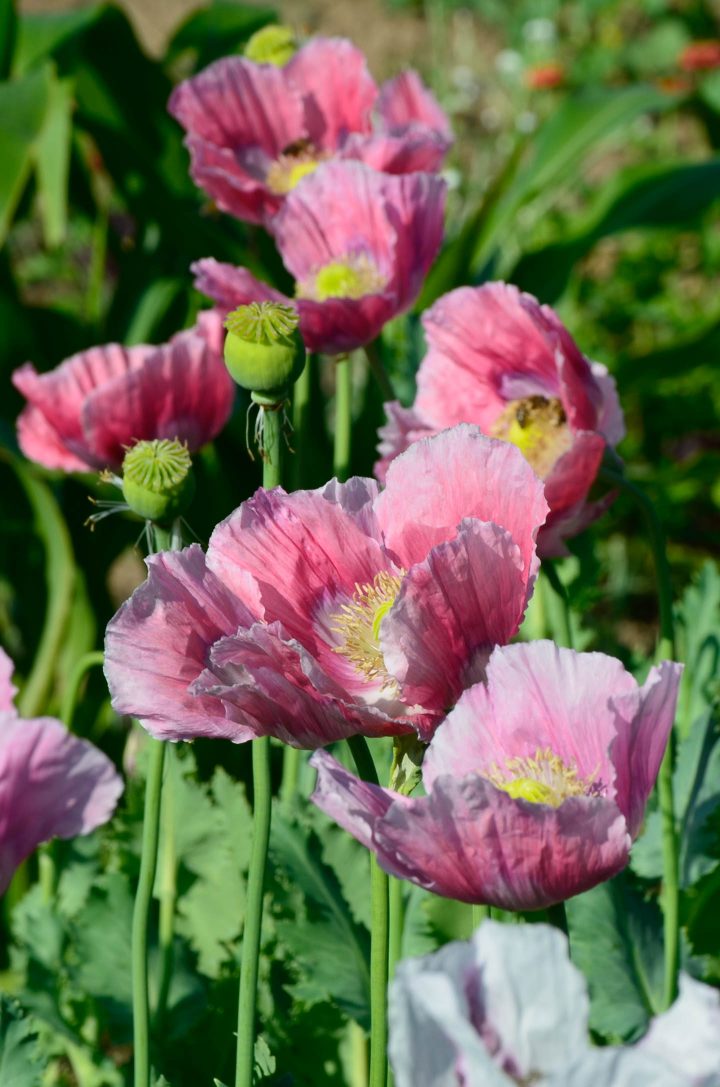
Botanical name: Papaver orientale
Zones: 3 to 7
Sun: Full sun
Bloom Time: Spring, early summer
Height: 2′ to 4′
Color: Orange, red, pink, purple, and white
Perhaps the most popular perennial poppy, Oriental poppies brighten the garden with their bold, papery leaves.
Most often found in red-orange, they also come in a variety of colors.
Their stems are stiff and hairy, making them great for cutting.
Oriental poppies do tend to die down in the heat of the summer, so planting with some companion plants will hide the empty spots.
6 | Liatris
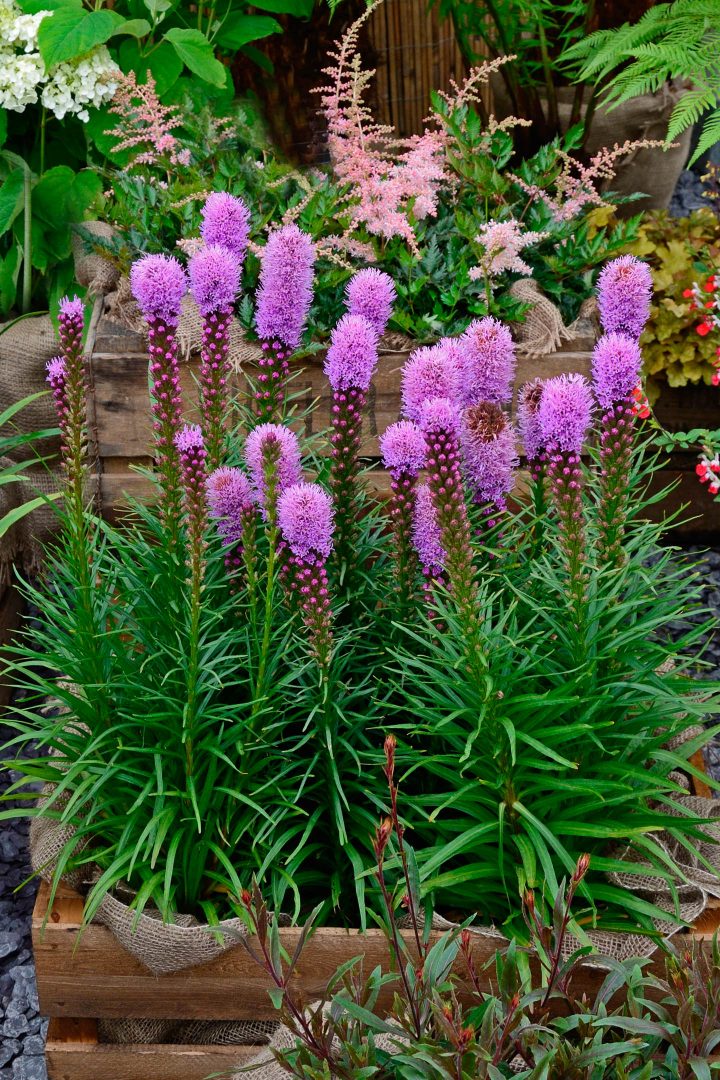
Botanical name: Liatris spicata
Zones: 3 to 8
Sun: Full sun
Bloom Time: Mid to late summer
Height: 1′ to 5′
Color: Purple and white
You won’t be able to resist touching the fuzzy Liatris flowers.
Also known as blazing star and gayfeather, the long spiky flowers bloom during late summer and into the fall. Which adds color to your garden at a time when many other flowers are past their prime.
Not only is Liatris a long-blooming perennial, but butterflies and bees love them. So you will find pollinators coming back to your yard year after year to visit them.
7 | Monkshood
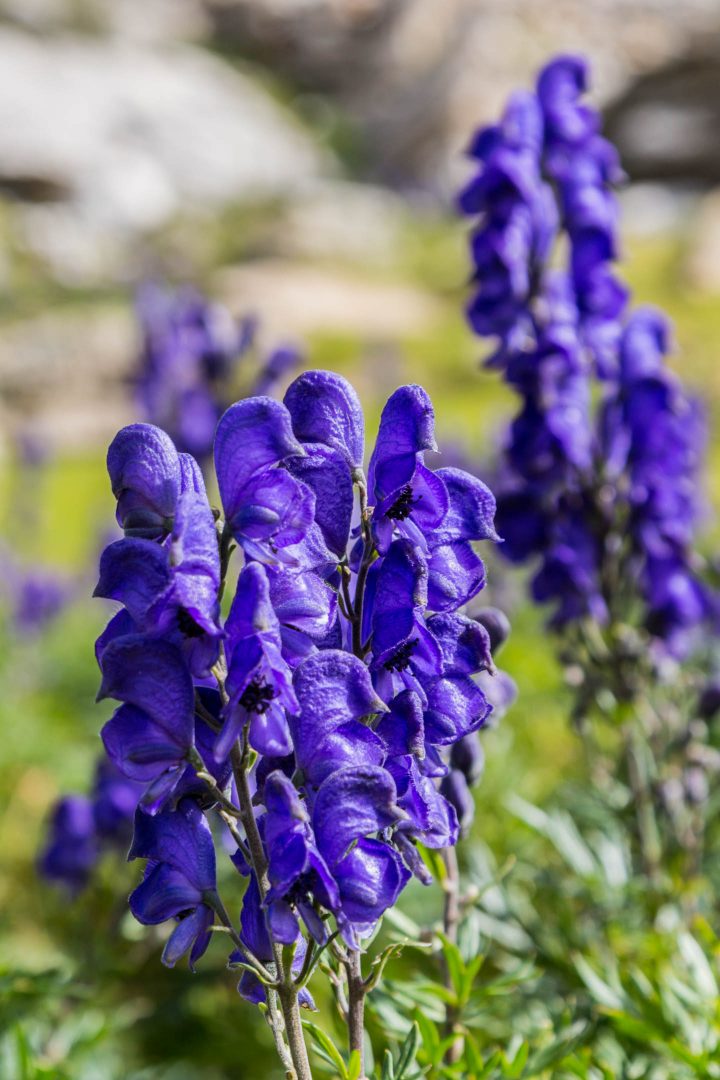
Botanical name: Aconitum napellus
Zones: 3 to 7
Sun: Full sun to part shade
Bloom Time: Summer
Height: 4′ to 5′
Color: Blue and purple
Monkshood is the Delphinium's lesser known cousin (you might have recognized the color and the shape of the flowers). But given it's long lifespan, I think Monkshood is actually a better option for many gardens.
It's a slow-growing plant that blooms on tall stalks. It doesn't need to be deadheaded, and generally requires very little maintenance.
However it is poisonous, so avoid planting monkshood if you have curious children or pets in your garden.
8 | Creeping Phlox
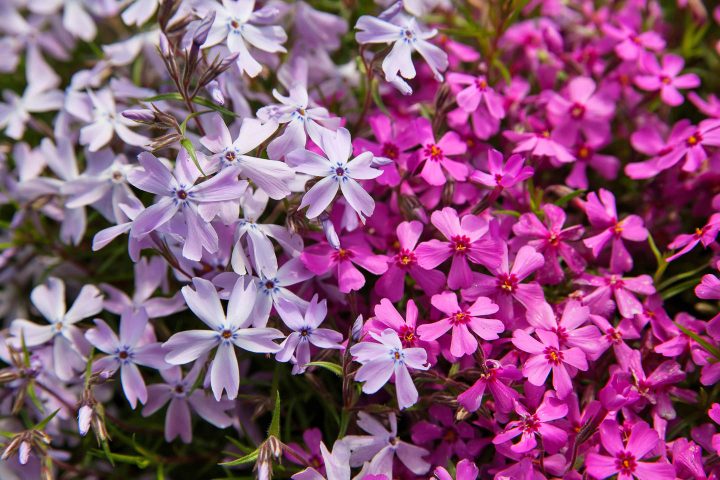
Botanical name: Phlox subulata
Zones: 3 to 9
Sun: Full sun to part shade
Bloom Time: Spring
Height: 6″ to 8″
Color: Purple, pink, and white
Also known as moss phlox, creeping phlox is a low growing perennial that is ideal for creating ground cover and filling in gaps in rock gardens and stone walls.
It slowly spreads and grows into a thick carpet (but is not invasive).
In the spring the flowers are so prolific it is completely covered in color. The rest of the year, it is a beautiful green.
9 | Catmint
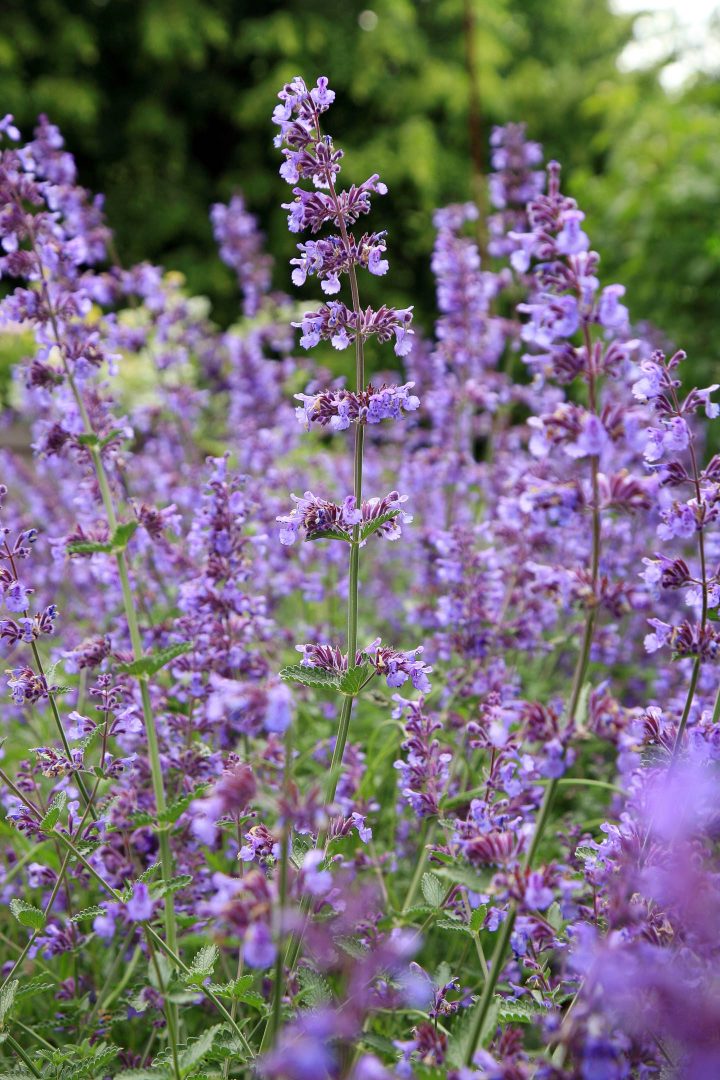
Botanical name: Nepeta spp.
Zones: 4 to 9
Sun: Full sun to part shade
Bloom Time: Spring
Height: 12″ to 24″
Color: Blue, pink, and white
As part of the mint family, you may notice a light and minty fragrance while gardening near catmint.
It’s an easy-to-grow plant with gray-green foliage topped with spikey blue flowers.
Catmint has a tendency to sprawl. So make sure to plant it where it has plenty of room to grow.
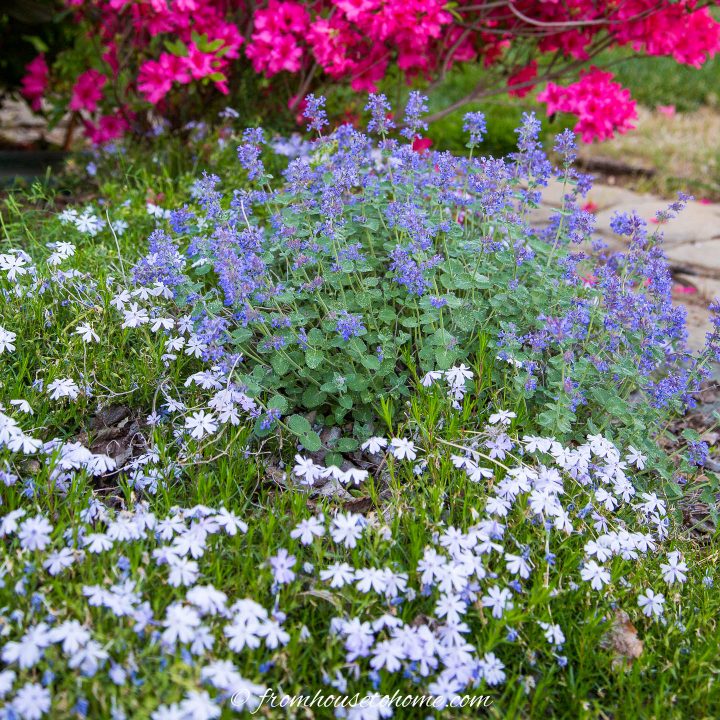
Or surround it with a thick-growing ground cover (like creeping Phlox) that will help keep the Catmint in check.
10 | Daffodil
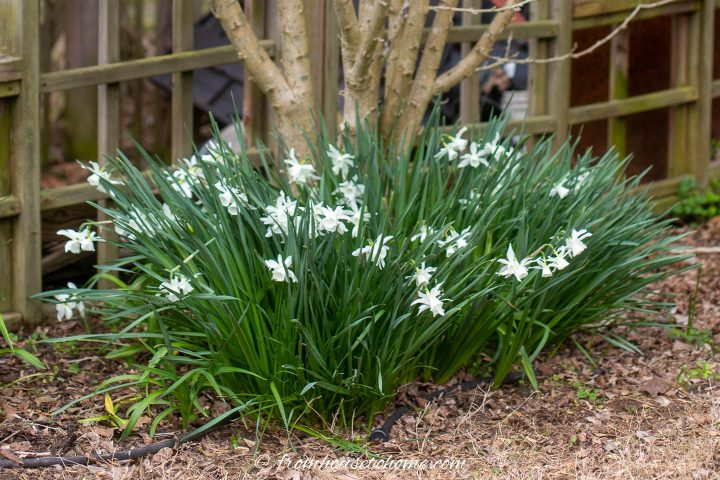
Botanical name: Narcissus
Zones: 3 to 9
Sun: Full sun to part shade
Bloom Time: Spring
Height: 12″ to 24″
Color: Yellow, white, orange, and peach/pink
No doubt you know this bulb! Daffodils may not come to mind when you think of long-lived perennials, but they return every season. Much more reliable than many other bulbs (like tulips).
They are beloved for their easy-to-grow qualities and their cheery attitude.
A herald of spring, you plant daffodil bulbs in the fall and wait for them to emerge at the first sight of warmer weather.
11 | Daylily
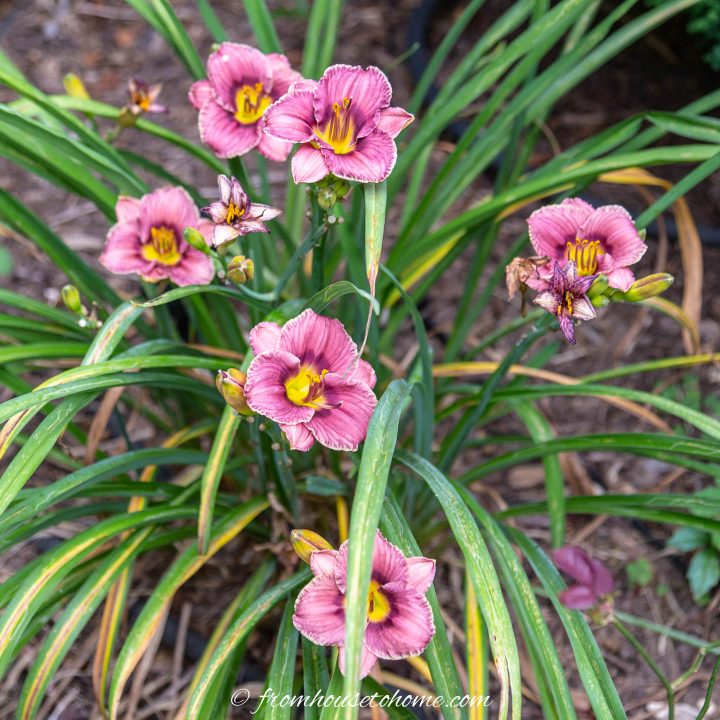
Botanical name: Hemerocallis spp.
Zones: 3 to 9
Sun: Full sun to part shade
Bloom Time: Summer
Height: 24″ to 36″
Color: Yellow, orange, red, purple, and pink
Daylilies are the perfect perennial for beginners. Known for being easy to grow and requiring little maintenance, they don’t mind wet or dry soil.
Most daylilies flower in the late spring or early summer, with some re-blooming through-out to the summer.
You may know the golden yellow tones of the Stella D’oro daylily which is one of the most common daylilies.
In order to take care of your daylily, divide them every 3 to 4 years. Not only will they be happy, but you will also get more plants!
12 | Hydrangea
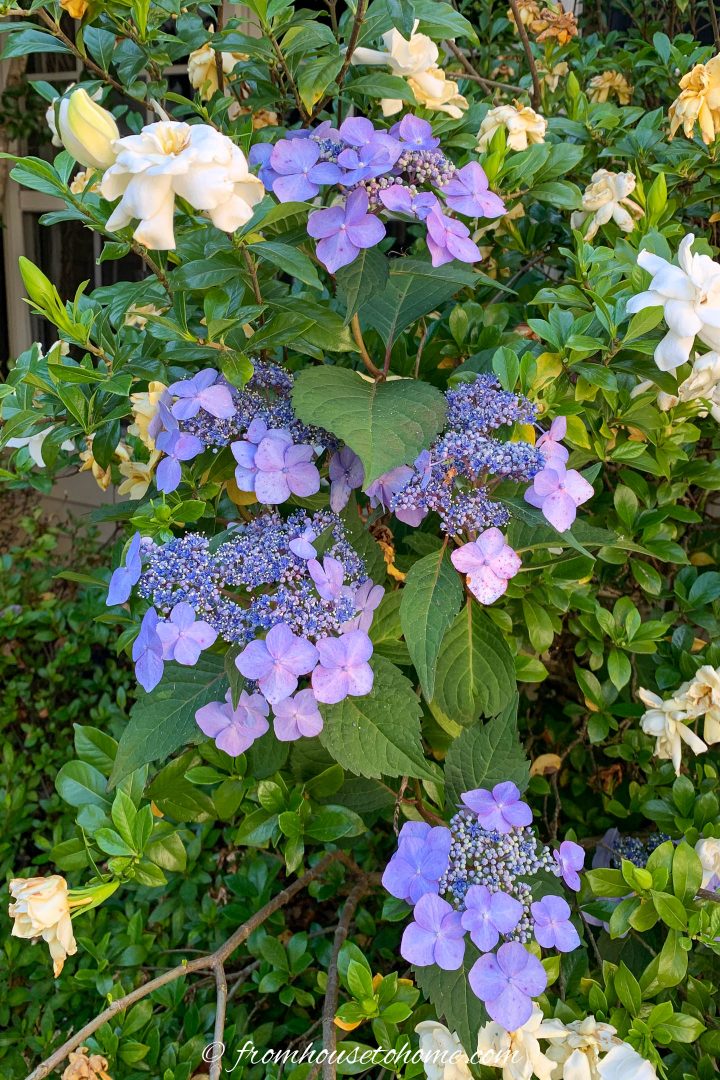
Botanical name: Hydrangea spp.
Zones: 5 to 9
Sun: Full sun to part shade
Bloom Time: Summer to fall
Height: 2′ to 8′ (depending on the variety)
Color: White, blue, green, pink, red, and purple
Just about every gardener wants a Hydrangea in their garden. A shrub with big, round clusters of flowers, they are a popular ornamental plant.
As the name implies, Hydrangeas thrive in moist (but not too wet) soils.
They often need a couple of years to establish themselves before starting to bloom, but are very easy to maintain once they get going.
13 | Peony
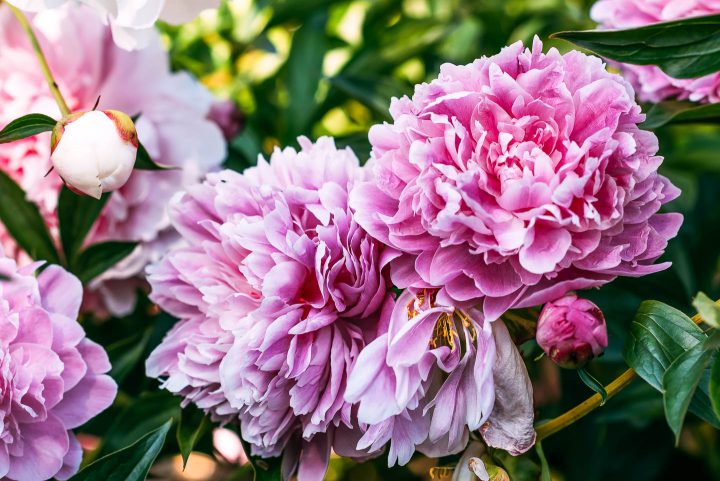
Botanical name: Paeonia officinalis
Zones: 3 to 9
Sun: Full sun to part shade
Bloom Time: Spring
Height: 2′ to 3′
Color: White, pink, red, purple, and coral
Peonies may be one of the longest lived of all the perennials, with some still blooming more than 100 years after they were planted.
Which means they are definitely worth the initial investment.
Take care of your peonies by planting them in their forever home (they don't like to be moved) and staking them to support their big blooms.
Their fragrant flowers also work well as cut flowers.
Find out more about growing peonies HERE.
14 | Sedum
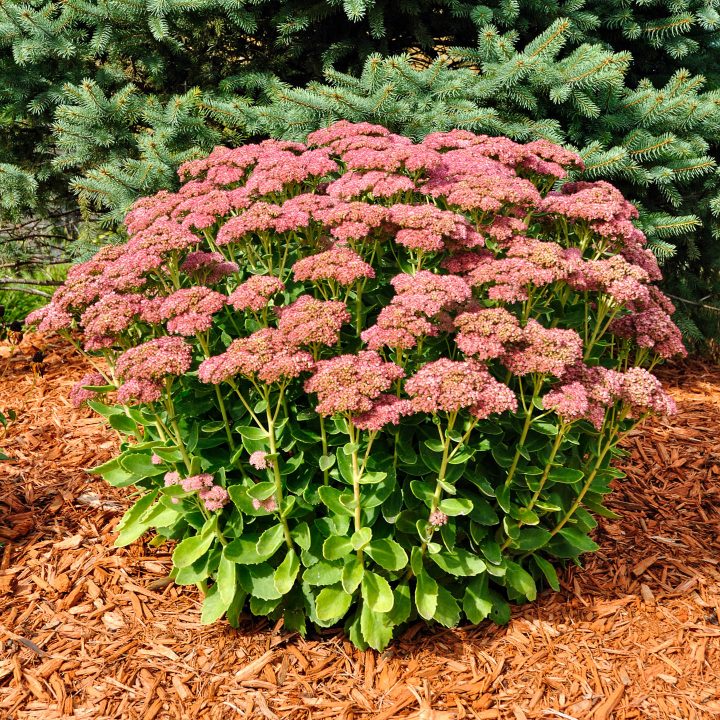
Botanical name: Sedum
Zones: 3 to 10
Sun: Full sun to part sun
Bloom Time: Late summer to fall
Height: 6″ to 36″ (depending on the variety)
Color: Red, pink, yellow, and white
The only succulent on this list of long-blooming perennials, sedum plants have thick fleshy leaves and usually bloom during late summer.
Like most succulents, they are fairly drought tolerant and do well in the heat.
Low-growing sedum will stay nice and low, working well as ground cover. While upright sedum (like the ‘Autumn Joy' variety above) will create vertical clumps and works well when grown in borders.
15 | Goatsbeard
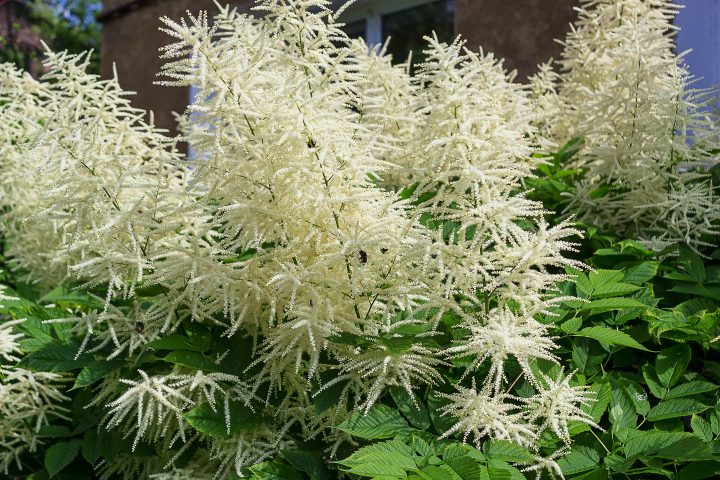
Botanical name: Aruncus dioicus
Zones: 4 to 7
Sun: Full sun to part shade
Bloom Time: Spring
Height: 8″ to 8′
Color: White flowers and dark green foliage
Looking for something a little different? Goatsbeard has dark foliage topped with wispy, white blooms.
A low maintenance plant, they are slow to get established but are definitely a long-lived plant after settling in.
A bonus? This plant is also deer resistant.
When purchasing, pay attention to varieties as there is a wide range of heights from 8 inches to 8 feet tall.
16 | Bergenia
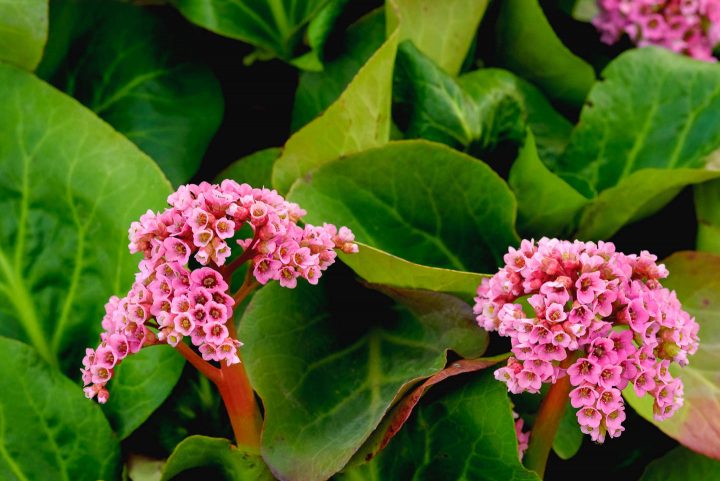
Botanical name: Bergenia cordifolia
Zones: 3 to 8
Sun: Part shade to full shade
Bloom Time: Spring
Height: 12″ to 18″
Color: Pink, red, and white
Bergenia is a low-growing plant that produces clumps of small flowers in the spring.
It has large glossy leaves that are evergreen in mild climates and really stand out in the shade. Then during the colder months, the leaves turn into a beautiful bronze color.
Bergenia reaches full maturity after 2 to 5 years.
17 | Bleeding heart
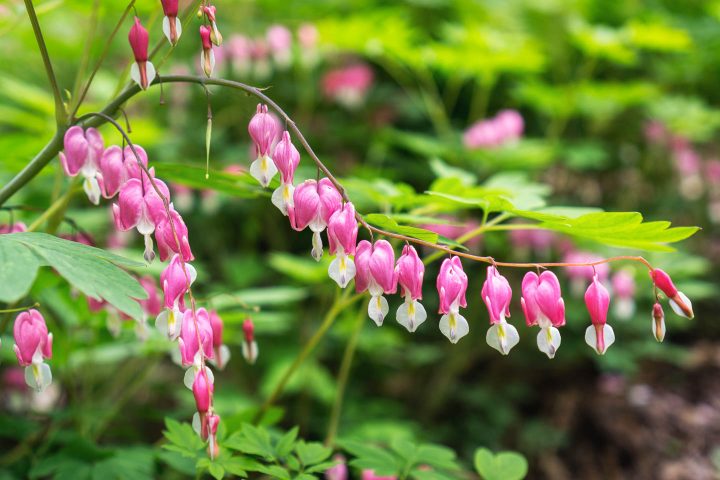
Botanical name: Lamprocapnos spectabilis (formerly known as Dicentra spectabilis)
Zones: 2 to 9
Sun: Part shade to full shade
Bloom Time: Spring
Height: 12″ to 18″
Color: pink, red, and white
A woodland plant, bleeding heart blooms during the cool spring temperatures, and then goes dormant in the summer. If you've seen the flowers, it’s clear where they get their name, with rows of heart-shaped flowers hanging down.
Traditional varieties go dormant in the summer after they have finished blooming. But some of the newer ones actually keep their fern-like leaves all season. So look for those if you don't want to worry about companion plants to cover the empty spaces in your garden.
18 | Hellebore
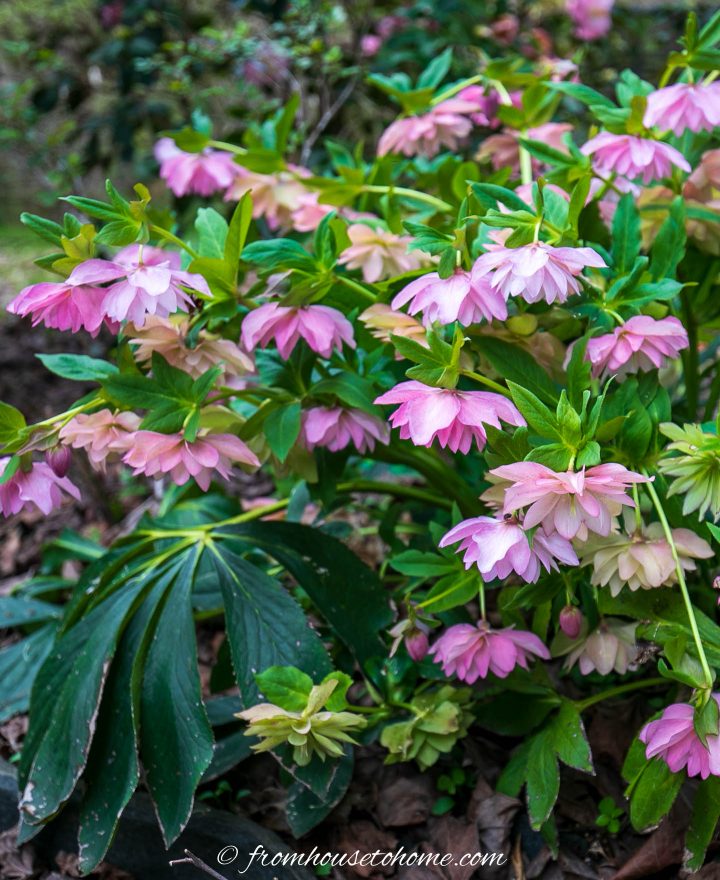
Botanical name: Helleborus spp.
Zones: 3 to 9
Sun: Full shade to part shade
Bloom Time: Late winter and spring
Height: 12″ to 36″
Color: White, pink, purple, and yellow
Hellebores are one of my favorite plants for two reasons:
- First, they are one of the first flowers we see emerge from a cold winter, often blooming before the snow has melted.
- Second, they adore the shade!
Hellebores have evergreen, palm-like leaves and rose-shaped flowers that tend to point down. But are definitely worth bending down to see how pretty they are.
Find out more about Hellebores HERE.
19 | Hosta
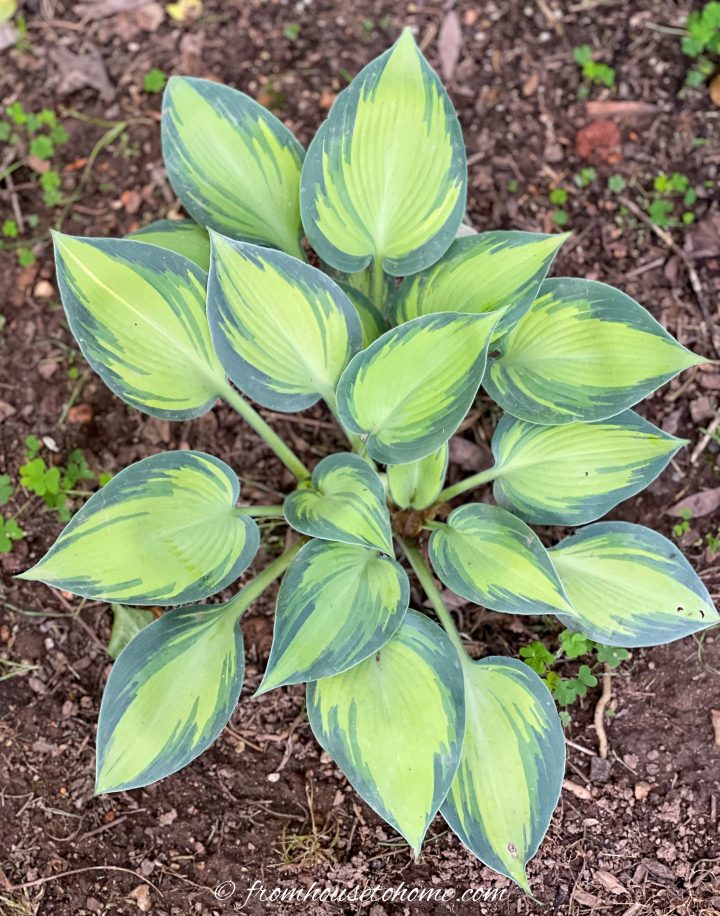
Botanical name: Hosta spp.
Zones: 3 to 9
Sun: Full shade to part shade
Bloom Time: Summer
Height: 8″ to 60″
Color: White, lavender, and pink
Another shade favorite, most gardeners plant Hostas to enjoy their attractive leaves. You can find leaves ranging from yellow to dark blue-green and variegated.
Having said that, many Hosta varieties have beautiful blooms in the summer. Some are even scented.
Hostas are easy to care for, fine being left on their own to grow for years. And if you want more of them, you can easily divide them every few years.
Find out more about growing Hostas HERE.
20 | Trilliums
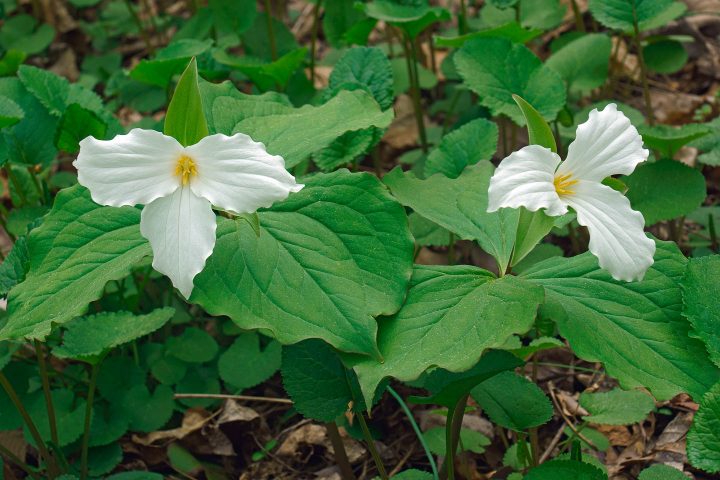
Botanical name: Trillium
Zones: 4 to 9
Sun: Full shade to part shade
Bloom Time: Late spring, early summer
Height: 12″ to 18″
Color: White, lavender, and red
Trilliums are a native plant to North America that love the shade.
They bloom in the late spring and can naturalize to form a carpet of flowers in a woodland setting.
Like some of the other shade-loving perennials, they go dormant in the summer so you may want to plant them with other shade perennials (like Hostas) that will fill in the gaps.
Well, that's it for my list of low-maintenance, long-lived perennials. Hopefully, you found a few you can add to your garden to keep it looking good for years to come.
Other plant lists you might like
Have suggestions for other long-lived perennials? Tell us in the section below.
Pin It So You Don't Forget It!
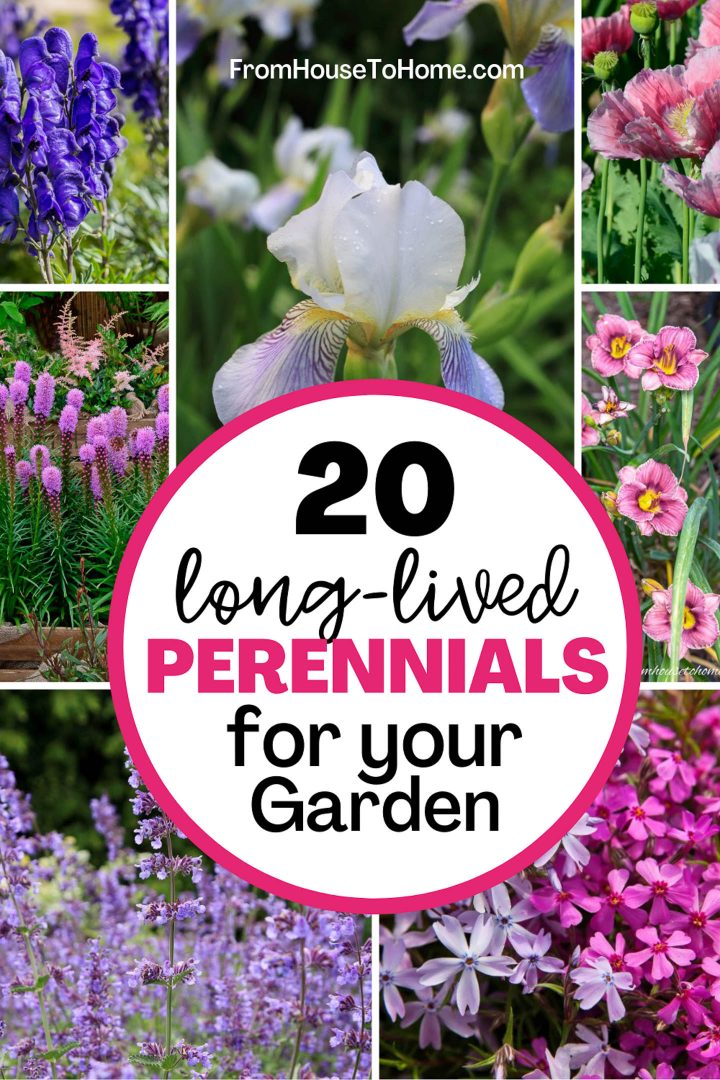
This post was originally published on June 17, 2021 but was updated with new content on November 23, 2024.

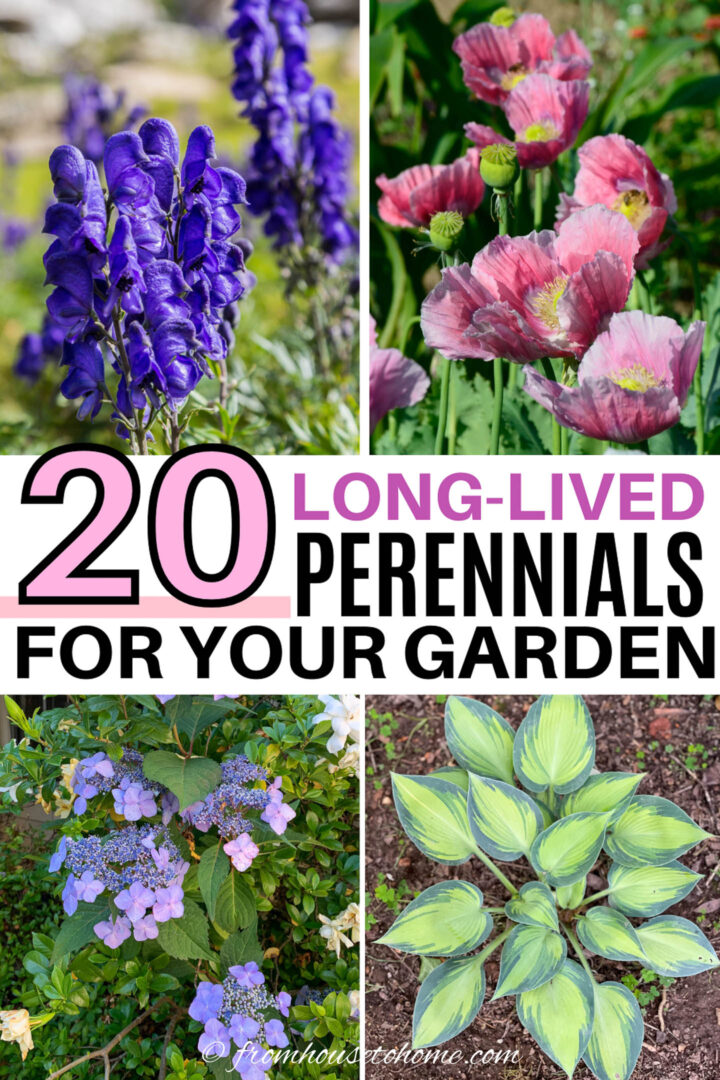
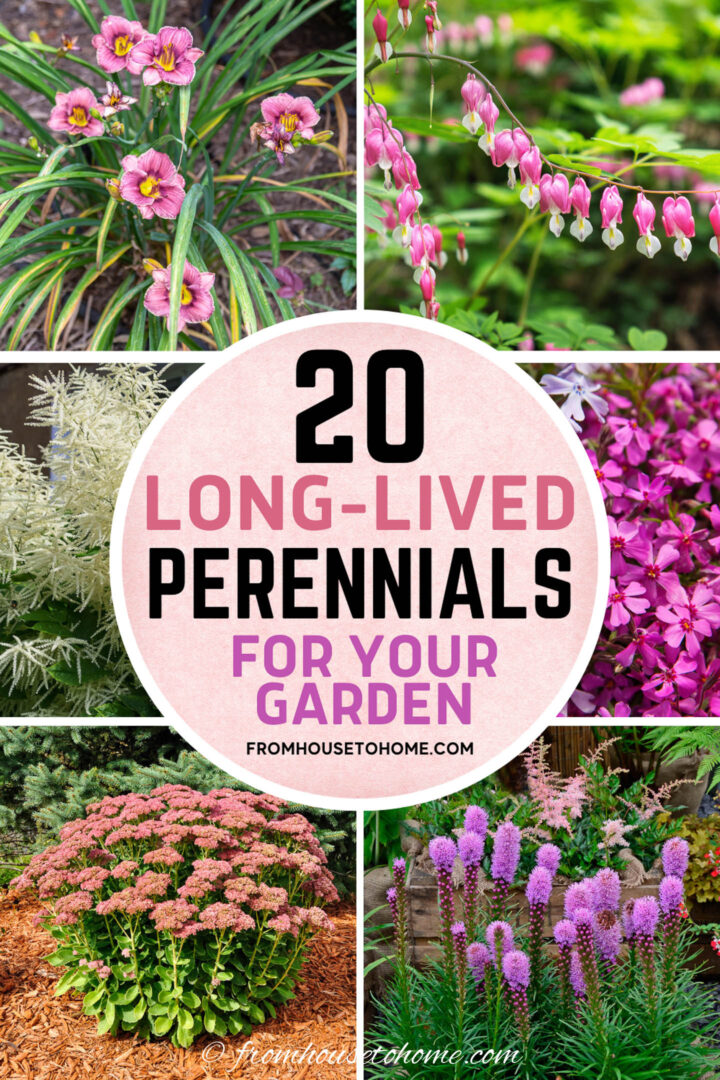
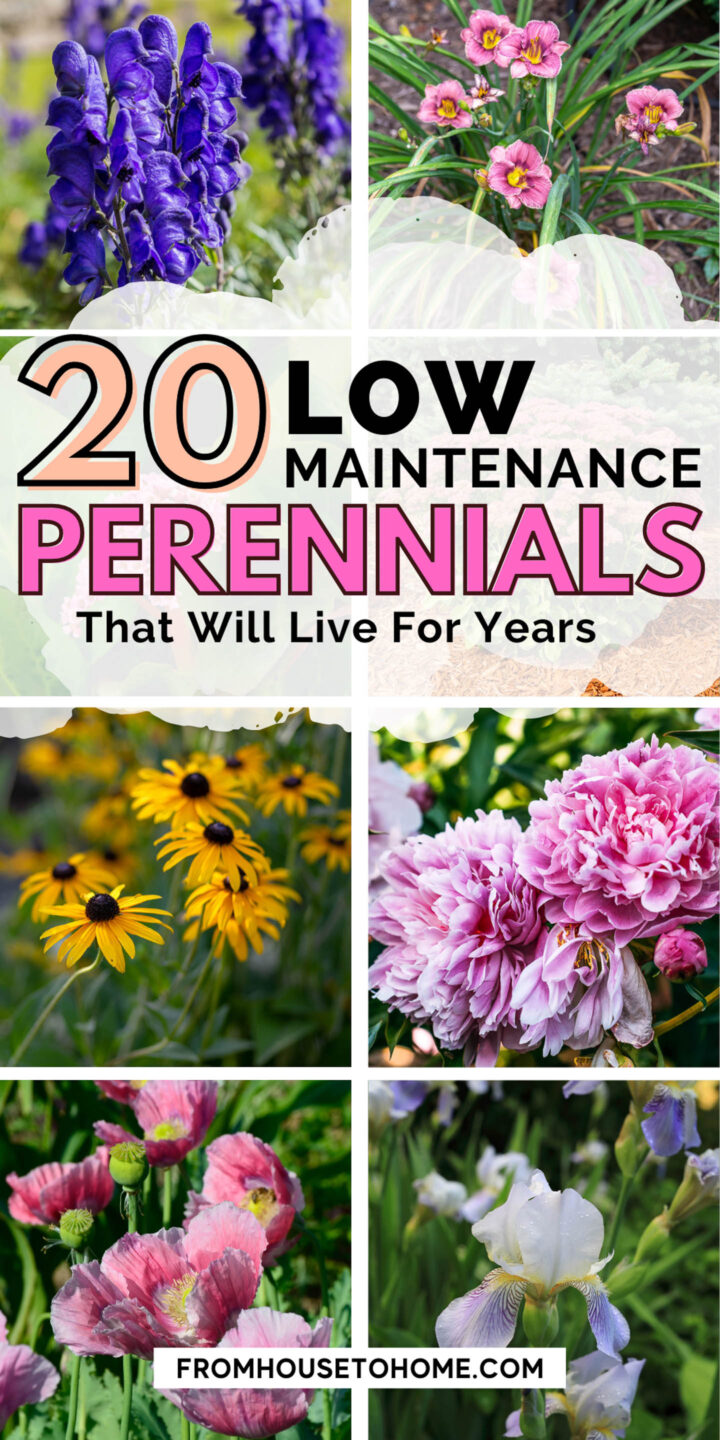
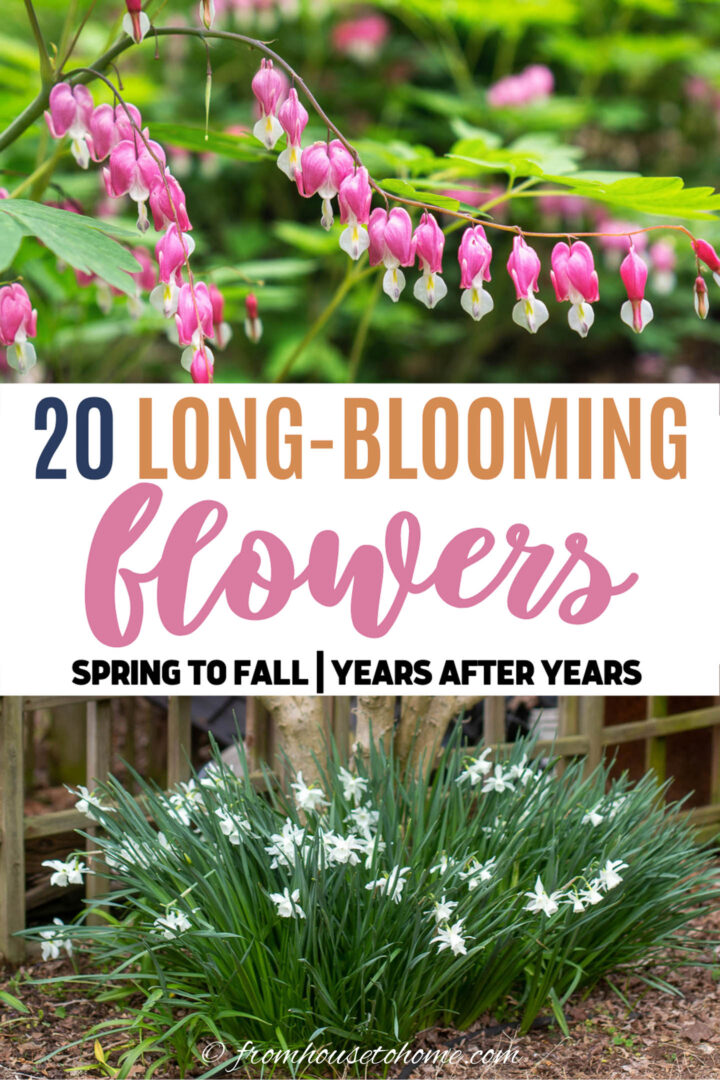
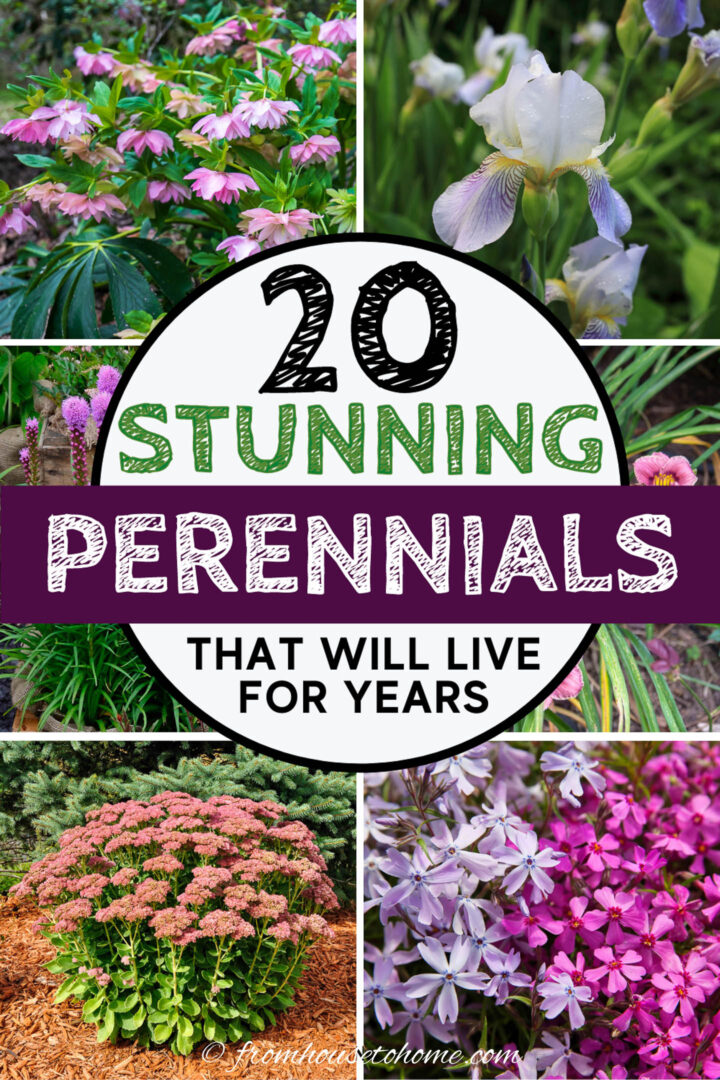
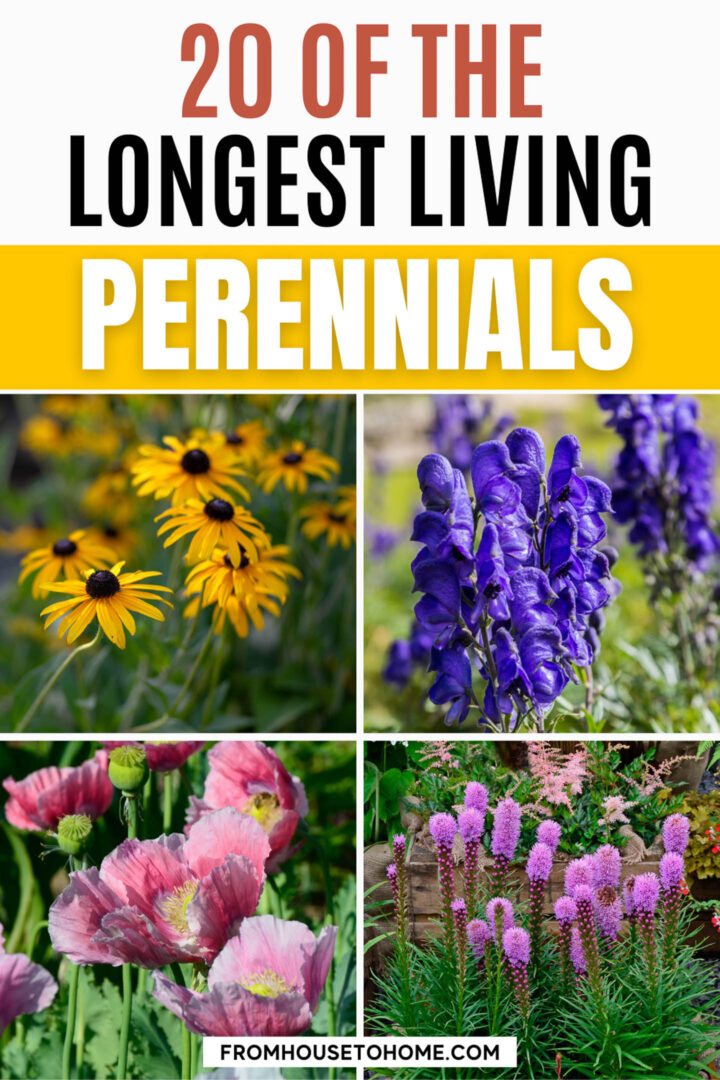
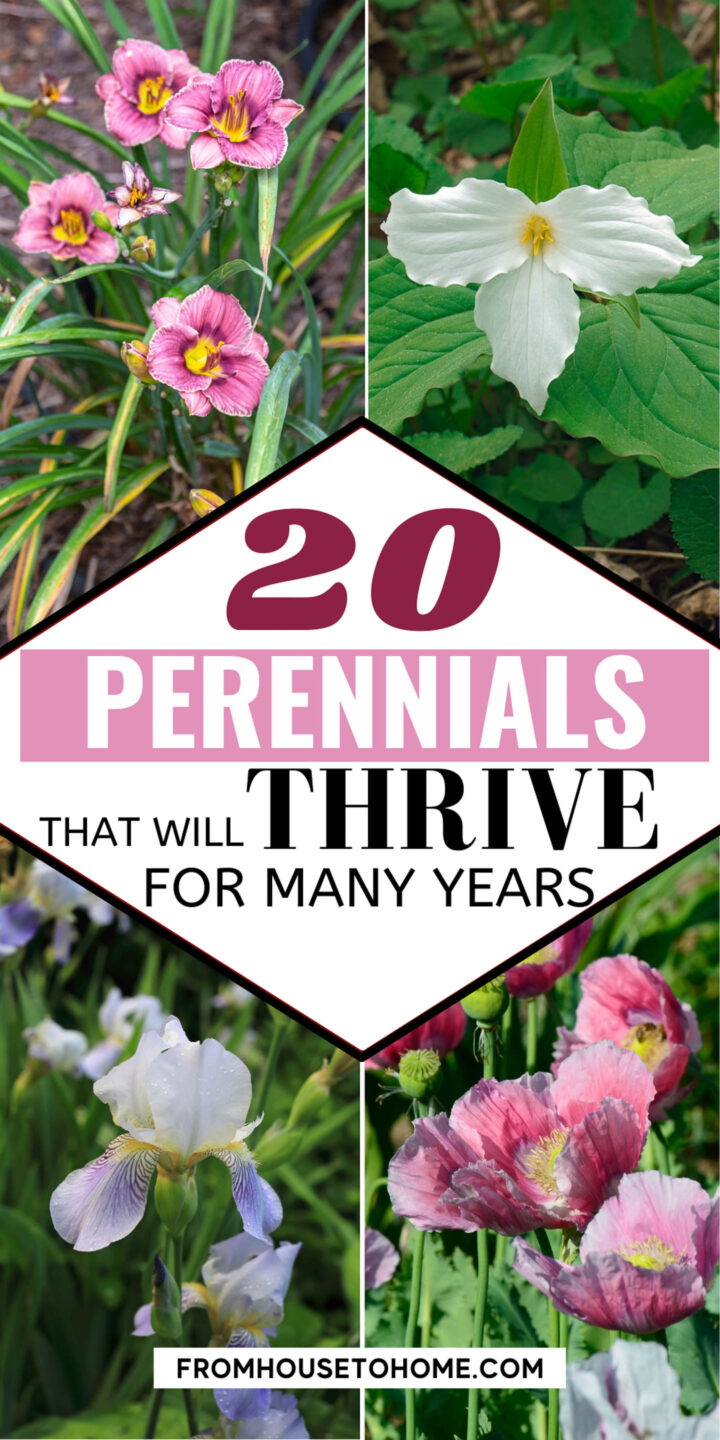
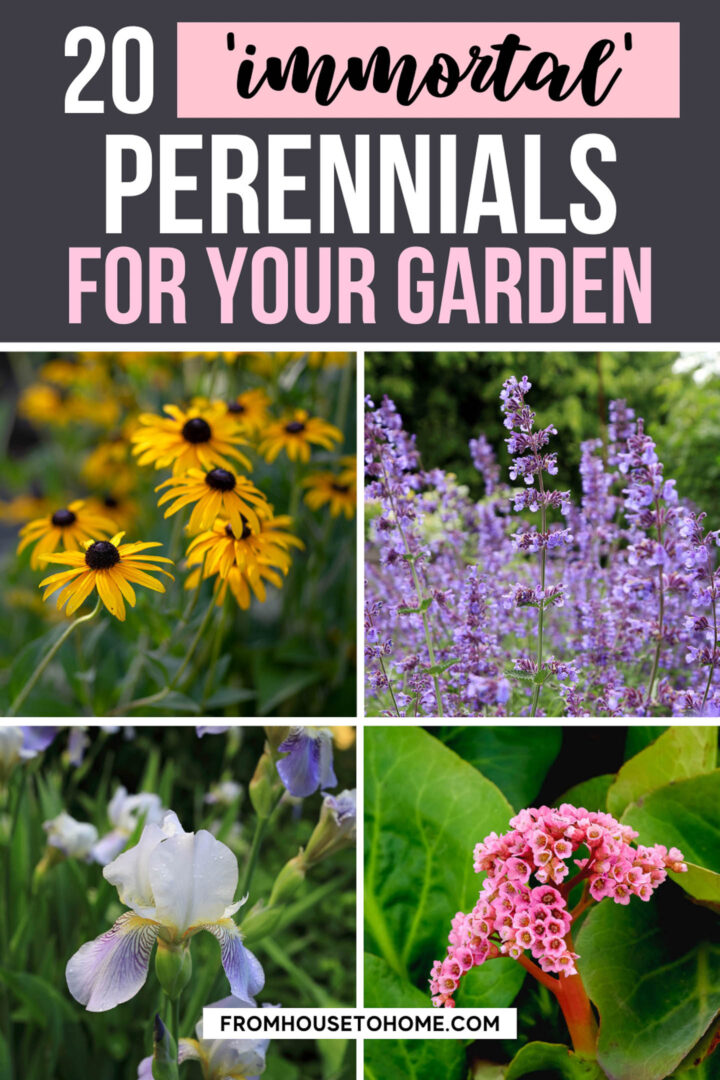
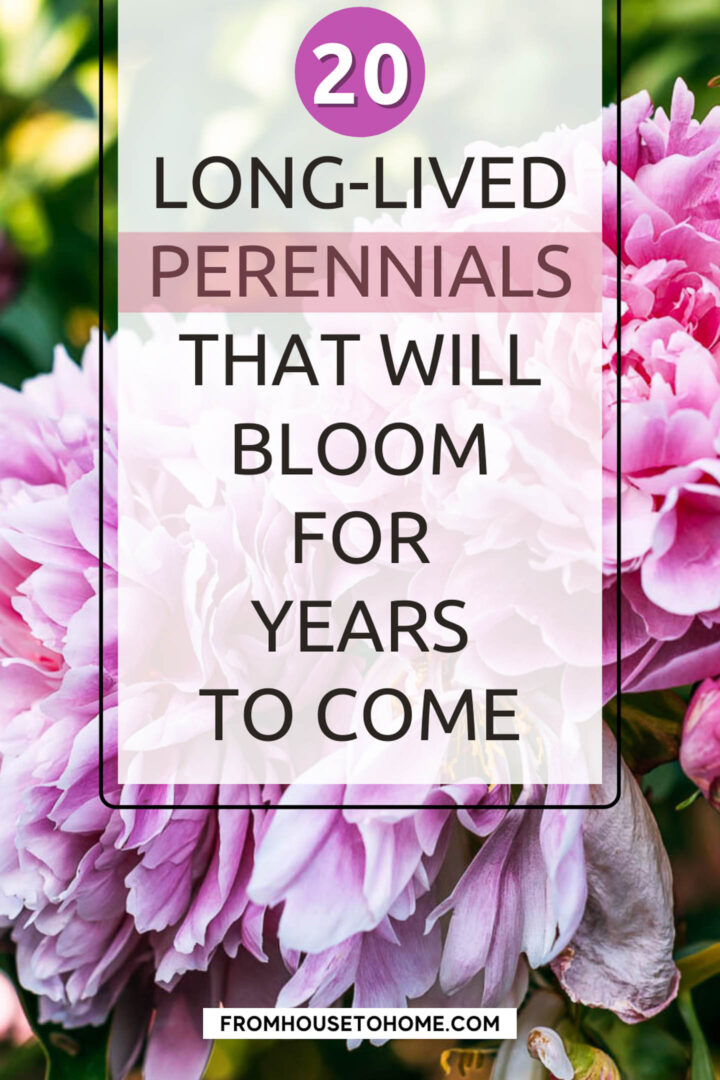
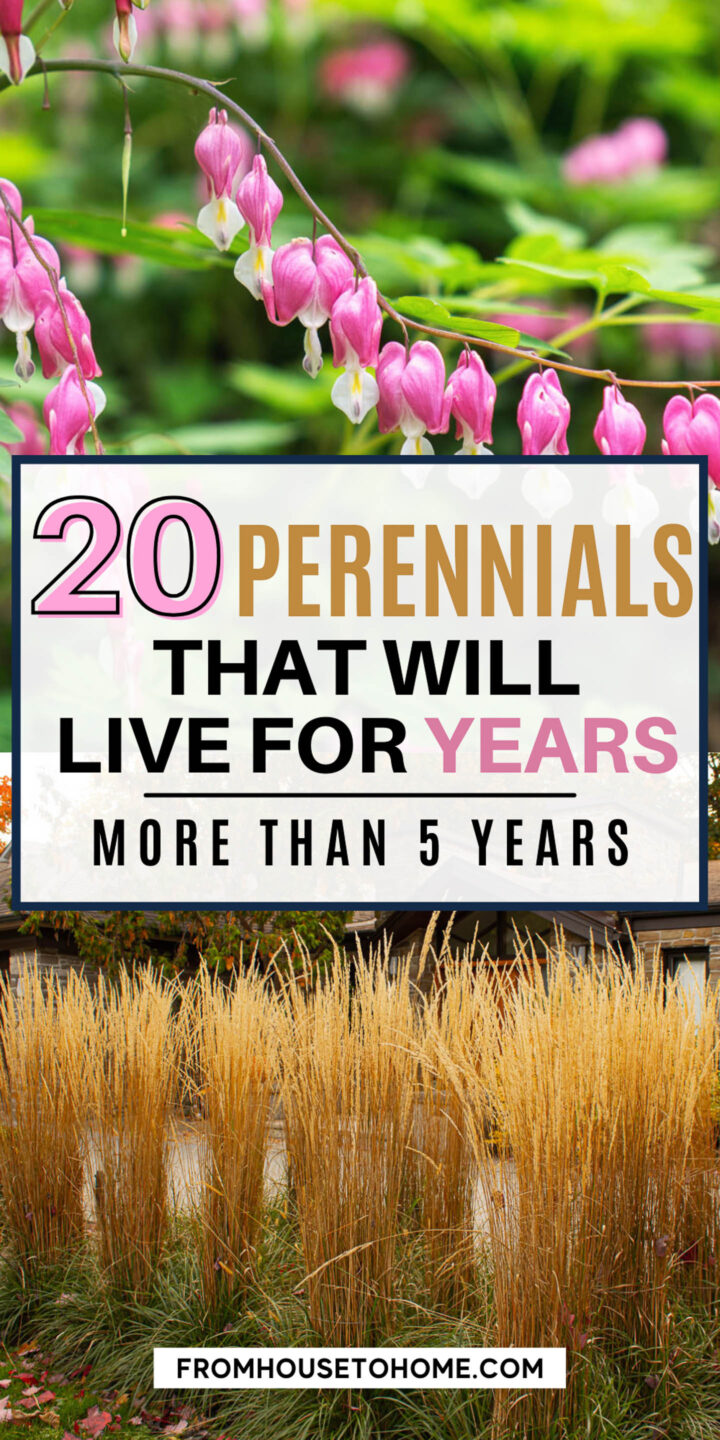
Hi Wanda. thanks again your information is always great, I keep a copy as I refer to it when I am looking for something new.
I seem to spend a lot of time in my garden, some times planting things in the wrong place and wondering why they they are not doing so well.
Having said that, it’s not looking too bad this year.
I am always happy with advice, so thank you.
Thanks, Breeda! I spend a lot of time moving plants around trying to find the right spot for them, too. So you’re not alone 🙂